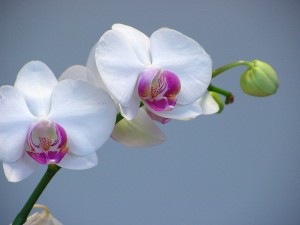Source: orchidblog
Choose healthy plants.

Next, be sure to buy plants that are healthy with no signs of pests or diseases. The bulbs should all be around the same size with none significantly smaller than others. It is best to buy an orchid that has already bloomed or is blooming at the time of purchase. Always look for living roots. Plus, don’t buy from sellers who are not reputable even if the low prices are tempting. One infested plant can devastate an entire collection of orchids.
Grow similar orchids together
Try to select orchids that grow happily together. That means: do not put orchids which like the shade with orchids which like the sun. And, do not place orchids which like nighttime temperatures of 70 to 80 degrees with those who prefer cooler nighttime temperatures of 50 to 60 degrees. Grow orchids together only if they have similar needs.
Make plenty of space
Orchids come in all sizes. Always be sure to research how tall your orchid is going to grow before purchasing it. Some tiny orchid plants may be no more than a few inches high, while others can be over two feet tall. A small orchid can spread out its flower stems to be over five feet long. If growing orchids inside, make sure that your house has enough room for your species to spread out.
Check humidity levels
Most warm orchids need pretty high humidity levels in order to thrive and flower. Many should be in the 60% to 80% range. If you live in a place where it gets very cold in the winters, you most likely will not be able to maintain such a high humidity level without building a greenhouse or some type of glass enclosure. Some of the cool orchids or terrestrials are not so demanding about moisture. These are better selections for beginners.
Water orchids well
The watering of orchids is one of the most critical aspects of orchid care. Most orchids are served well by watering once a week. You should wait for the plant to dry out but don’t let it get totally dry in-between watering. The top should be dry to the touch and the pot should feel light. One of the biggest mistakes beginners make with orchids is over-watering. Water the plant well–until water flows from the drainage holes. But make sure the orchid is well-drained and there is never any accumulation of water.
Air circulation is necessary
Orchids need to be able to have a lot of air circulation for superior growth. Unlike most plants, except for a few terrestrial varieties, orchids are not planted with their roots growing into the soil. Whatever media you use for planting–fir bark, sphagnum moss, peat moss or others, it is essential that the entire growing area has adequate ventilation. Inside, a ceiling fan on low is just right for proper air circulation. Stale air can cause an orchid to deteriorate.
If you want your orchids to flower, you are going to have to fertilize them. There is not a lot of agreement among gardeners as to the best fertilizer for orchids. Everyone seems to have their own pet theory. The best way is to simply try a couple of different fertilizing options and see which works out the best. You can go all organic with your fertilizers, using compost from worm castings or fish emulsions, or you can use synthetic fertilizers, such as 10-10-10 with varying amounts of nutrients.
No comments:
Post a Comment